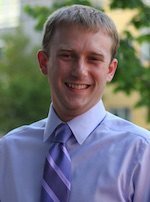John ZuHone, High-Energy Computational Astrophysics

Center for Astrophysics | Harvard & Smithsonian
Rm. B-404
60 Garden St., MS-03
Cambridge, MA 02138
I am currently an astrophysicist at the Center for Astrophysics | Harvard & Smithsonian (CfA), working at the Chandra X-ray Center in the ACIS Operations Team. I previously held postdoctoral appointments at MIT Kavli Institute, NASA/Goddard Space Flight Center, and the CfA. I received my Bachelor of Science degree in physics from the University of Illinois at Urbana-Champaign, and my Master of Science and doctoral degrees in astronomy and astrophysics at the University of Chicago.
Since 2015 I have working in Chandra operations, helping operate the Advanced CCD Imaging Spectrometer (ACIS) camera. In addition to regular operational tasks such as monitoring spacecraft telemetry and reviewing and approving weekly observing schedules, I have taken a lead on developing and maintaining thermal models to predict temperatures that will be reached by various ACIS components, as well as analyzing solar storms to help determine when the ACIS camera should be safed during high radiation periods. You can find out more about my Chandra operations work here.
My main research interests are merging galaxy clusters and the physics of the intracluster medium (ICM), a hot, magnetized plasma that comprises the bulk of the cluster’s baryonic material. The ICM radiates in X-rays, and telescopes such as Chandra and XMM-Newton have revealed a wide array of interesting phenomena. You can find out more about my research here.
For this research I have been using (and in many cases helping develop) N-body/hydrodynamics codes such as FLASH, GAMER, and Arepo. I am also a contributor to the yt Project, an analysis and visualization system for astrophysical simulation data (yes, that’s a mouthful!). I have also developed the Python software packages pyXSIM and SOXS to simulate X-ray observations from a variety of sources. You can find out more about my contributions to scientific software here.